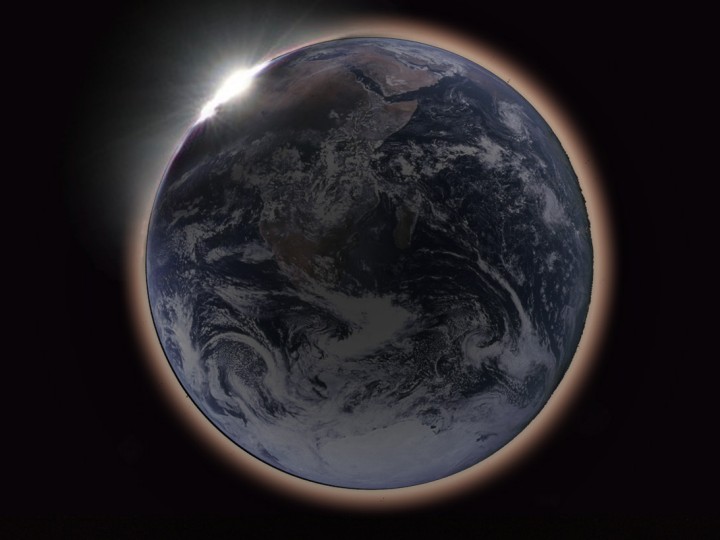[This post was originally published on The Living Room Tumblr.]
I’ve been saying it since at least 2005, when I wrote on my blog:
More than once, the thought has occurred to me: “Man, it would be cool if there was a webcam on the Moon.” I mean, seriously, put an iSight up there, and rig it with some sort of long-distance Internet connection, and it could broadcast a live picture of the Earth, as seen from the lunar surface, 24 hours a day, 7 days a week. How cool would that be?
I tweeted about it in 2010:
Two artist’s conceptions of a total lunar eclipse as seen from the Moon: http://bit.ly/fX7RC7 http://bit.ly/fX7RC7. WE NEED A LUNAR WEBCAM!!
— Brendan Loy (@brendanloy)
And again last August:
This @marscuriosity thing is great, but when are we going to put a webcam on the Moon? @nasa #PutAWebcamOnTheMoon
— Brendan Loy (@brendanloy)
And last month:
This is crap. myfoxdc.com/story/21908503… We should choose to put a webcam on the Moon in this decade & do the other things. #PutAWebcamOnTheMoon
— Brendan Loy (@brendanloy)
Well, guess what? IT’S ACTUALLY HAPPENING!!!
A telescope that is set to launch to the moon in 2015 will allow the public to go on the Internet and view the Earth from the lunar surface.
The privately funded telescope, known as the International Lunar Observatory precursor (ILO-X), was designed and built by Silicon Valley-based Moon Express Inc. …
“We want to win the Google Lunar X prize so that is somewhat driving our schedule,” Richards said, adding his customers want Moon Express to land on the moon before the end of 2015.
“So I would say sometime in mid-to-late 2015 is when we’d be looking at.”
Let me be the first to say: OMG OMG OMG OMG OMG OMG!!!!!!
[Moon Express CEO Bob Richards] said the shoebox-sized telescope will allow people to see images they’ve never seen before because they will be taken from the lunar surface.
“Depending on where you are on the Earth you may be seeing the moon up in the sky, taking a picture of you, which would be kind of a heady thing to think of,” he added.
Richards pointed out that people on Earth will even be able to manoeuvre the telescope by remote control, giving them out-of-this-world access to galaxies, stars and planets.
“The other thing that you’ll be able to do is turn the telescope down to the lunar landscape and take pictures of the landscape that’s around the (Moon Express) lander.”
Yes, well, that’s all well and good, but as Nathan Wurtzel tweeted in response to one of my prior #PutAWebcamOnTheMoon tweets: “And we’ll check back on the mooncam…still nothing happened. This marks the 8278th day nothing has happened.” Heh. As Nathan suggests, the view of the lunar surface isn’t going to be the most, uh, dynamic aspect of this. The view of Earth is where the real appeal lies.
More specifically, the view of Earth during lunar eclipses is the holy grail. Because, of course, what we call a “lunar eclipse” is, from the Moon’s perspective, a solar eclipse – with the earth’s atmosphere refracting the Sun’s light and forming a “ring of fire” around our planet.
It must be an incredible sight. But it’s one that nobody has ever seen in the history of mankind.
NASA made Hana Gartstein’s artist’s conception of a lunar eclipse from the lunar perspective its “Astronomy Picture of the Day” in 2007 – that’s the image at the top of this post – and NASA also published, in 2003, a fictional account of a lunar colonist watching an eclipse live from the Moon in 2105:
For the next hour he patiently waited, watching the sun’s disk glide behind something big and dark: Earth. From the moon, Earth looked three and a half times wider than the sun. Sometimes Earth was amazingly bright, blue and cloudy-white. Today, though, the planet’s night side was facing moonward.
Finally, the sun vanished. This is what he had been waiting for…. Lit from behind, Earth’s atmosphere began to glow around the edges, ringing the dark planet with all the colors of a sunset. And from there sprung the Sun’s corona: pale white, sticking out like Jack’s sister’s hair when she rubbed her stockinged feet on the carpet back in the lunar habitat.
Jack cleared his visor to enjoy the view.
The ground around him wasn’t bright any more. It was dim and deep red–aglow with sunlight filtered through the edge of Earth’s atmosphere. All at once every sunset on Earth was shining down on Jack.
I want to see that on a webcam, dammit. And, if the Moon Express project succeeds, we will – soon. They’re targeting “mid-to-late 2015.” Well, there will be a total lunar eclipse on April 4, 2015, and another on September 28, 2015.
After that, no more total lunar eclipses until January 31, 2018. (Here’s the full list of 21st-century lunar eclipses, total and partial and penumbral.)
So, Mr. Richards, there’s your deadline. Get this webcam on the Moon by September 28, 2015. And do the other things.

